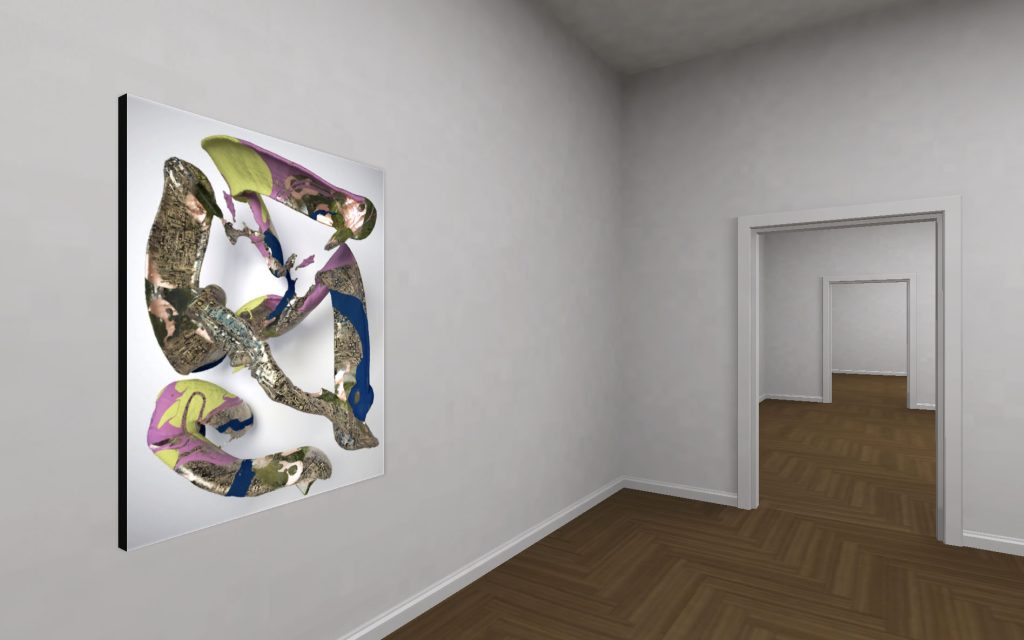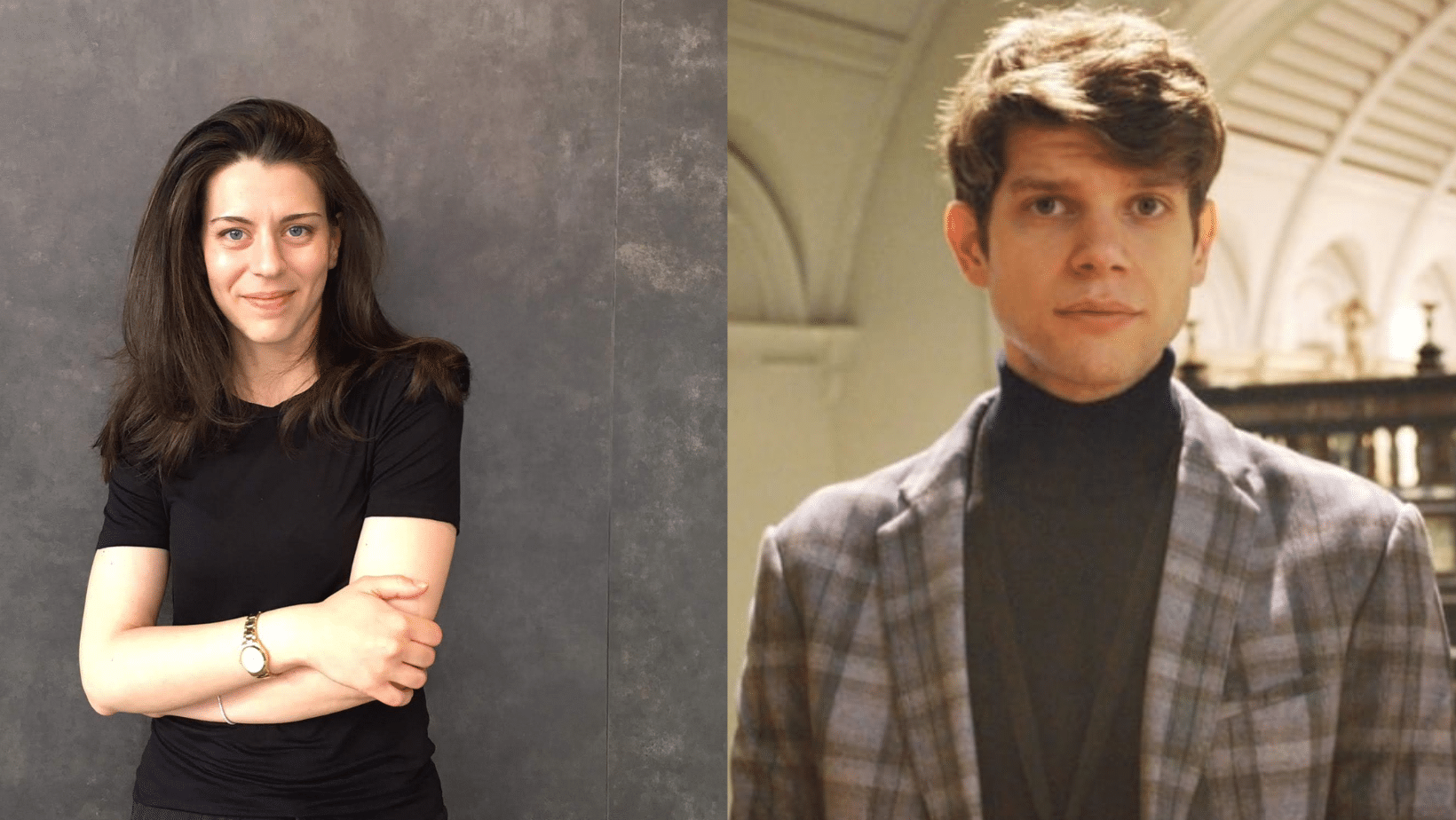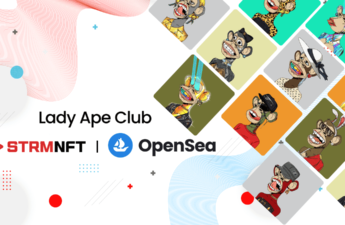Not many people know that digital art has existed since the 1960s. For a long time, however, people in the art world saw it as “less than” traditional art, or just as an advertising medium. Fortunately, digital museums such as MoCDA play a crucial role in educating everyone about digital art and its role in an increasingly digitalized world. NFTevening caught up with Filippo Lorenzin and Serena Tabacchi at NFC in Lisbon to talk about MoCDA’s vital work.
What is MoCDA?
The main goal of MoCDA, or the Museum of Contemporary Digital Art, is to educate artists, collectors, institutions and art lovers about digital art. In addition to exhibiting digital artworks, the MoCDA team is hard at work in educating, collecting and documenting digital art to elevate its status.
What is interesting about MoCDA is that the team wants to provide a basis for understanding digital art in its own context, rather than simply as a by-product of fine art. Therefore, this future-oriented approach cements MoCDA as an indispensable, forward-looking institution for forward-looking artists and art lovers.
The idea for MoCDA came about when its co-founder Dominic Perini attended a 2018 Christie’s meeting in London. There, he met a lot of individuals that are now popular in the NFT and crypto space. This is when he realised that a movement was about to happen. At that point, Serena, who worked at the Tate in London at the time, got involved. Together, they created the foundation for MoCDA. The rest, as they say, is history.
Introducing a broader focus
The MoCDA team is very interested in NFTs. However, the team opts for a broader approach that takes all forms of digital art into account. According to Filippo, this helps the museum to be more inclusive and comprehensive; especially as digital art has existed for more than sixty years.
“It will be very limiting to say we’ll just focus on NFTs; especially because, technically speaking, it would be very awkward in 10-20 years because technology changes; and what we call NFTs now is definitely going to change in 20, 25 or 50 years,” explains Filippo.
By focusing on digital art in general, MoCDA serves as a platform where people can learn about emerging digital artists and technologies that make digital art more meaningful. “The technology comes with this kind of burden of being something complicated, not accessible, and very difficult to grasp,” says Serena.
“We wanted to create a place where people could enjoy the art and learn the mechanism to create what they could enjoy visually, or through the different senses; rather than just you know, ignoring what was happening under the surface.”
In addition, digital art is inherently different from traditional art in the way it is displayed. While many associate art with frames displayed in physical museums, digital art is much more than that. Digital works of art do not depend on a physical space. Rather, according to Serena, “what is digital should be digital. Hence the idea of creating a museum that could welcome that kind of work.”

Bringing about a cultural shift
Traditional museums and institutions are slowly but surely recognizing the value of digital art. International institutions such as the British Museum, Tate Modern and the Belvedere Museum are dipping their toes in digital art.
“Recognition of something digital is important; especially as it was often perceived just as a social media account,” says Serena.”And so it doesn’t hold the value of a location that you can travel to visit in real life. Often, being present in a space makes it more legit. Today, luckily enough, this is kind of turning around.”
However, both Filippo and Serena agree that this increase in recognition depends on the country’s cultural climate. “The thing about traditional museums, and their relationship with the history of digital art, depends on the culture and the cultural background of the museum,” explains Filippo. He uses his native Italy as an example.
“In Italy, I mean, we don’t really have anything concerning digital art. Of course, there are some projects. Most of them are independent, or private groups. But for example, I used to work at the Victoria and Albert Museum. And they have one of the most interesting digital art and digital design collections in the world.”
This all boils down to generational change and a cultural shift brought about by education. After all, as Filippo puts it: “if you don’t have that generation of creators who had the opportunity to get interested in digital art; you will keep having curators and museums only interested in traditional types of installations.”
MoCDA’s educational initiatives are bringing about change
Education is part and parcel of MoCDA’s work. Both Filippo and Serena, however, insist that everything depends on whether students or art lovers want to learn more about digital art.
“We’re trying to make education available and accessible. And that’s the main goal. So if somebody wants to know more, they know where to find more about what we’re doing,” says Serena.
But it’s not just about MoCDA – it’s about artists and the artistic value of a piece, as opposed to its monetary value. “It’s about the story of their work; how it’s being created; and what the technologies are doing that work.”
MoCDA’s educational work is rooted in action. In fact, team members regularly visit universities to teach students more about digital art and its role in Web3. The question is: Do young people want to learn more about this space?
“There’s a lot of curiosity from young people,” confirms Serena. “Most of them already know what a digital asset is. So, most of them are aware that digital comes with value, which is different from previous generations.”
Filippo continues, “It’s about giving the opportunity to whoever wants to learn about digital art. The worst thing is to force people to know about something because at that point it starts to become propaganda.”
Through their advocacy and educational work, MoCDA is bridging the gap between the often “elitist” fine art world and art that exists in the digital sphere. By inspiring young Millennials and Gen Zers, institutions like MoCDA are ensuring that digital art is finally getting the recognition it deserves.
Are you tired of missing important NFT drops?
Just check out our NFT Calendar!
Receive the biggest NFT news of the day & recommendations in our Daily newsletter.
All investment/financial opinions expressed by NFTevening.com are not recommendations.
This article is educational material.
As always, make your own research prior to making any kind of investment.




